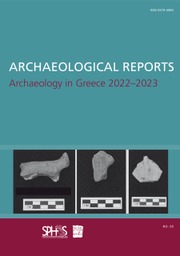No CrossRef data available.
Article contents
5 Archaeology in southwest Anatolia: research from Ionia and Caria in the last decade
Published online by Cambridge University Press: 08 December 2023
Abstract
This paper presents a review of recent archaeological work in Ionia and Caria, located in southwest Anatolia. In this paper we focus on archaeological research conducted in the past decade and we present a synthesis of recent discoveries and published research. Southwest Anatolia is a region where the earliest archaeological work dates back to the 19th century. However, there are research areas that have been long neglected, and archaeological work has been stifled until recent decades. As a result, the last decade of research has seen significant transformations in approaches and methodologies, with new research agendas to report. Owing to their presentation in historical accounts, Ionia has been perceived as more embedded within the world of Greek archaeology, whereas Caria, viewed from an Atheno-centric perspective, has been regarded as peripheral and provincial. Therefore, it is interesting to present a synthesis of archaeological research for both regions together. It is promising that archaeological practice in both regions has begun to embrace a longue dureé approach and has shifted research focus from major urban centres and monuments to new research foci by making use of interdisciplinary research, including rural landscapes, domestic space, cultural identities, and daily practices.
- Type
- Archaeology in Greece 2022–2023
- Information
- Copyright
- © The Author(s), 2023. Published by Cambridge University Press on behalf of the Society for the Promotion of Hellenic Studies and the British School at Athens


